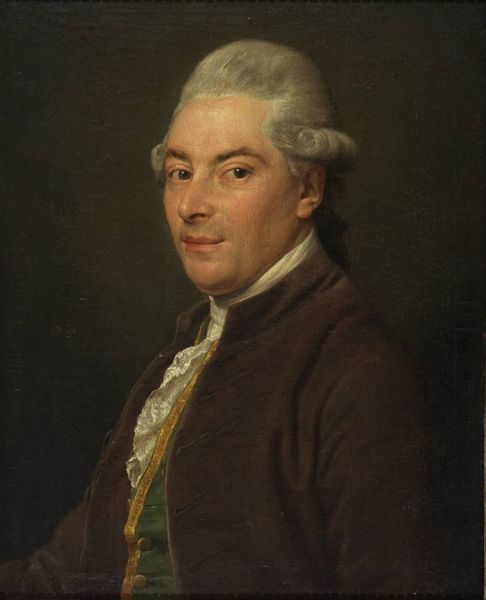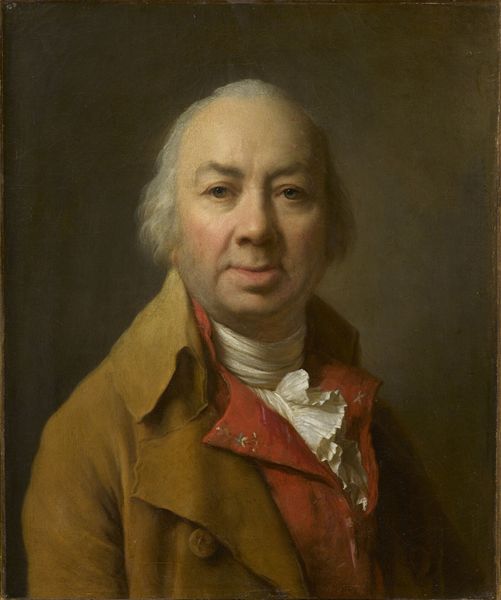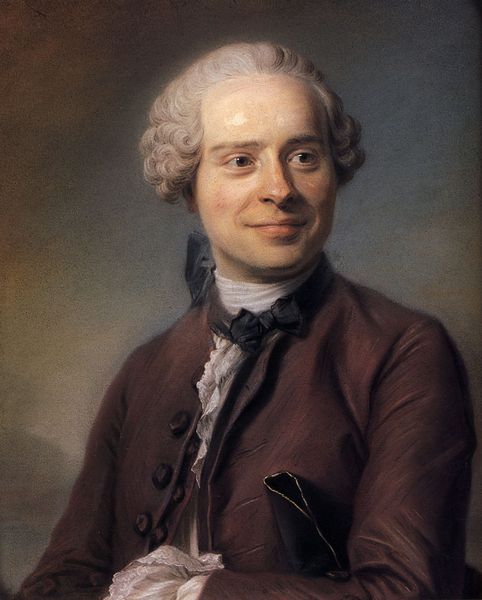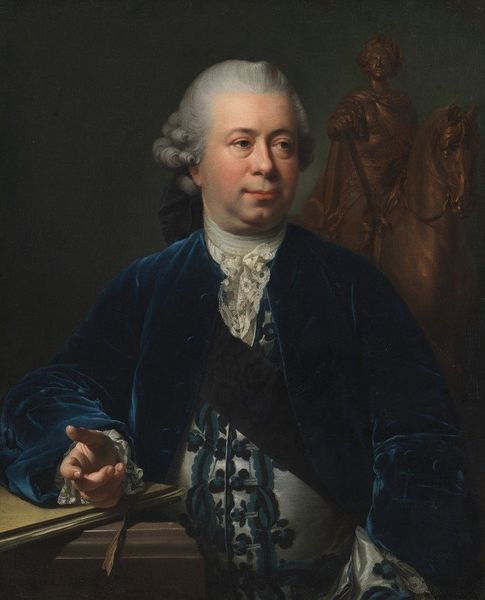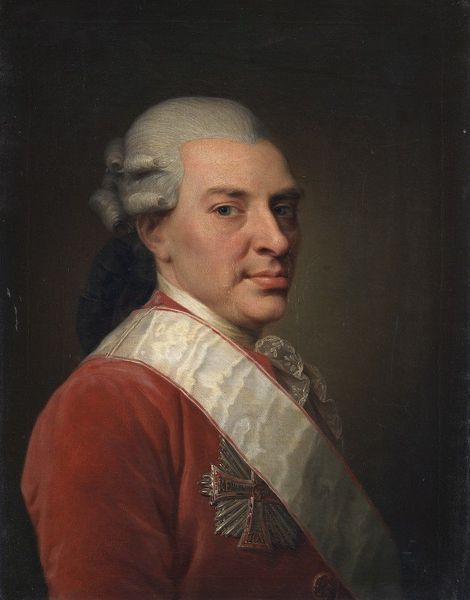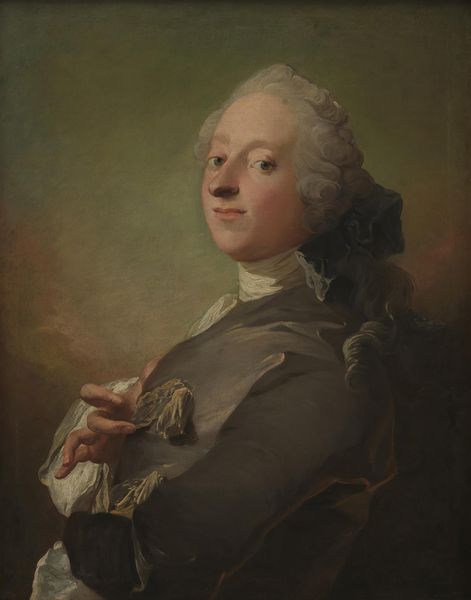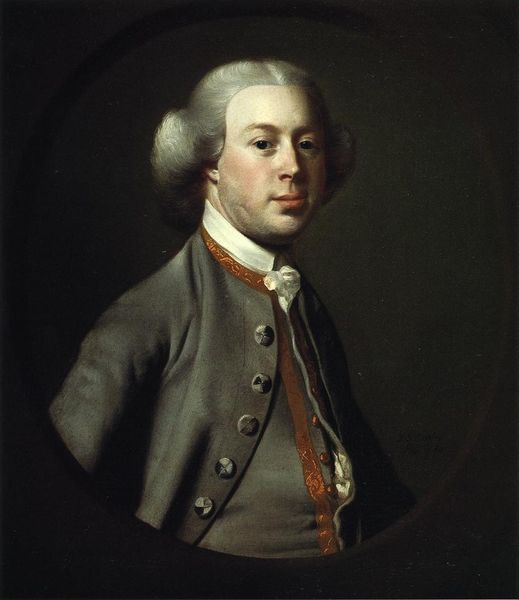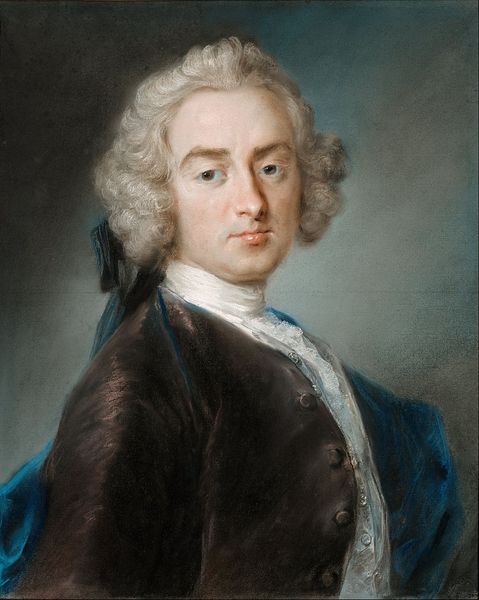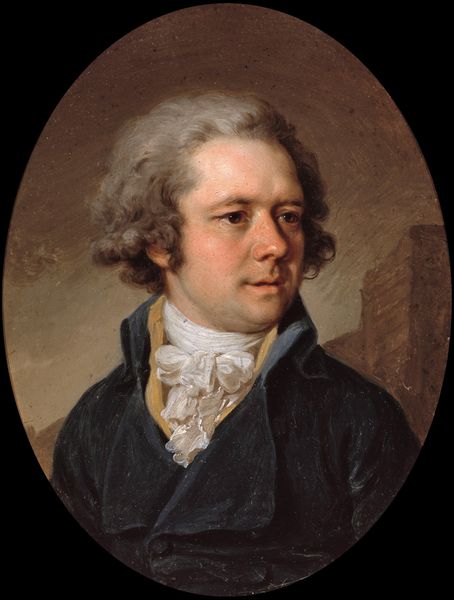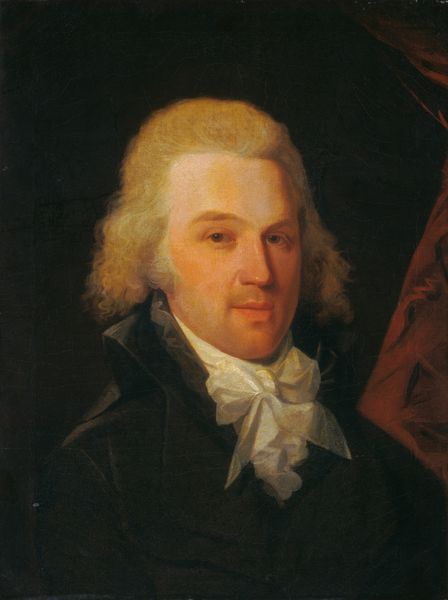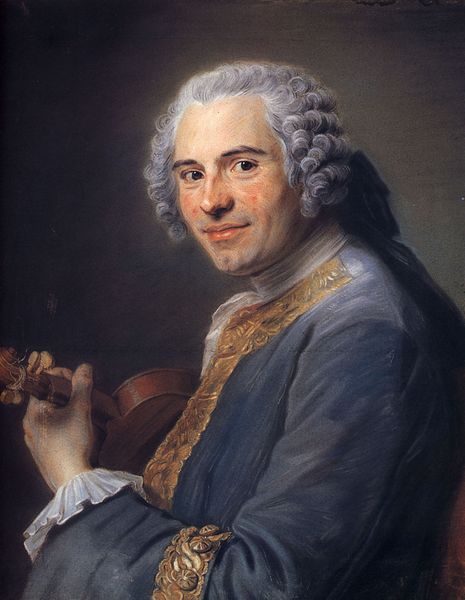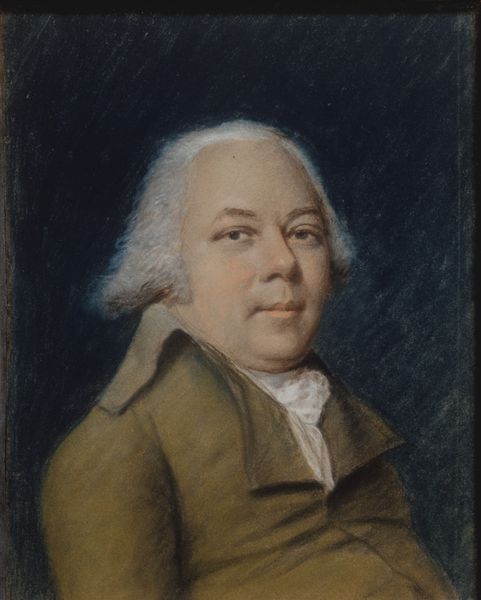
#
portrait
#
portrait image
#
portrait reference
#
portrait head and shoulder
#
animal portrait
#
animal drawing portrait
#
portrait drawing
#
facial portrait
#
portrait art
#
fine art portrait
#
digital portrait
Dimensions: height 46 cm, width 38 cm
Copyright: Rijks Museum: Open Domain
Editor: This is Johann Friedrich August Tischbein's self-portrait from 1782, oil on canvas, currently at the Rijksmuseum. I’m struck by how direct his gaze is. It feels almost confrontational, yet…vulnerable? What’s your take on it? Curator: I'm interested in unpacking that feeling of confrontation. What power dynamics were at play when a man of Tischbein's status – as a court painter in the late 18th century – presented himself in this way? Was this vulnerability a carefully constructed pose, designed to subvert the rigid expectations of the aristocratic portraiture he usually produced, or was it reflecting the changing philosophical views toward the self? Editor: So, it's less about just seeing a portrait, and more about what he's trying to say about his position through this self-representation. But wasn’t self-portraiture pretty common for artists at that time? Curator: Absolutely. But we can still question what he's claiming by positioning himself in opposition to conventional portrayals. Consider the texture: there’s a cracking across the surface of the painting. Does that fragility invite reflections on social standing? Editor: Interesting…it’s like the cracks on the painting represent a kind of social and perhaps personal… fracture? Curator: Precisely! And this might not just be the perspective of the individual. Consider that 1782 is creeping ever closer to 1789 and the start of The French Revolution: an art revolution, as well, against court patronage and what had come before it. How does the painting reflect that social agitation? Editor: I guess I was only seeing the surface of this portrait—the very literal image of the man, instead of thinking of what that image represents, as related to both his time and to today. Thank you. Curator: Of course! It’s all about continuously engaging in dialogue between the artwork and its historical, social, and theoretical contexts.
Comments
rijksmuseum about 2 years ago
⋮
Tischbein came from a German family of artists and was called the ‘Dutch Tischbein’. This was not only because he was born in Maastricht and spent his childhood in The Hague, but also because he portrayed the stadtholder’s family in the 1780s, as can be seen in this gallery. His elegant likenesses were universally admired.
Join the conversation
Join millions of artists and users on Artera today and experience the ultimate creative platform.
